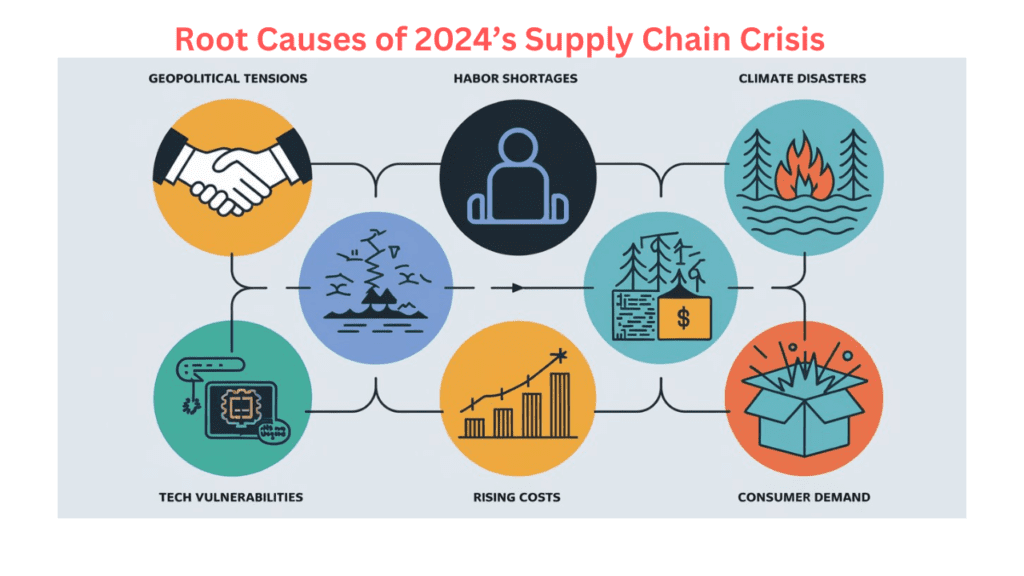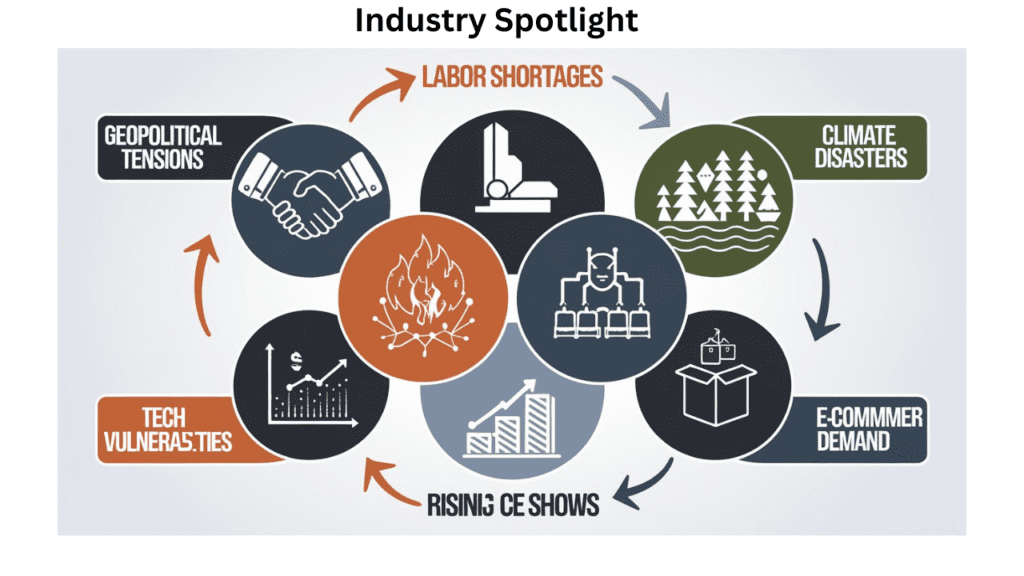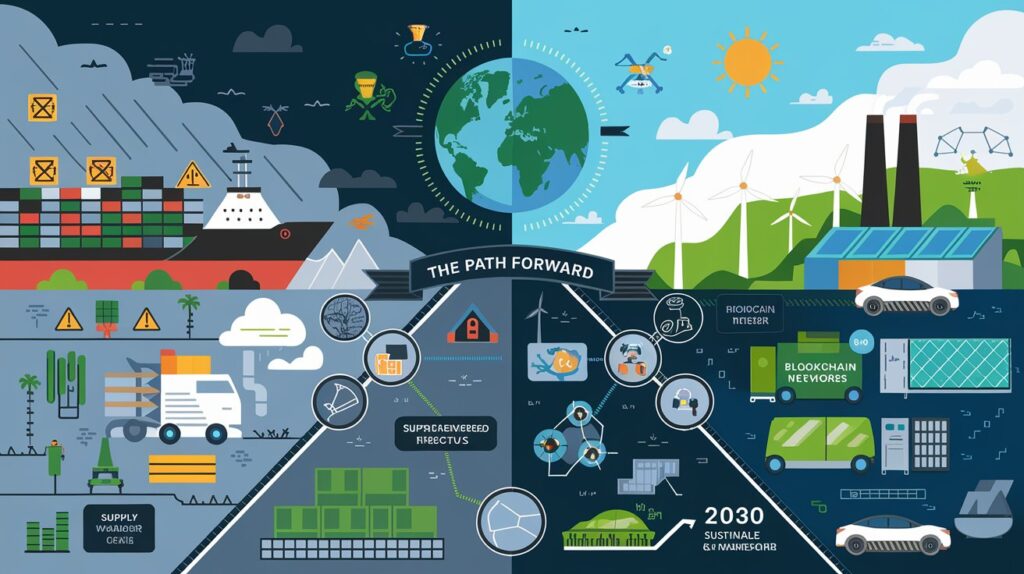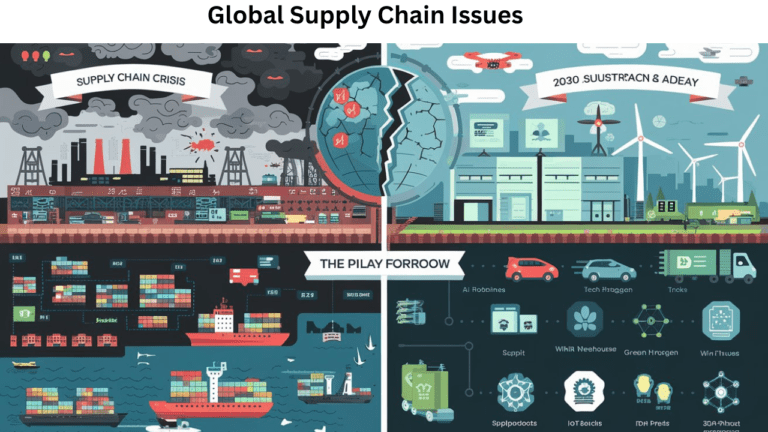Global supply chain issues are no longer just a buzzword—they’re a reality reshaping how businesses operate. From delayed holiday gifts to stalled car production, these disruptions touch every corner of the economy. But what makes 2024 different? Let’s dive deeper into the root causes, industry-specific impacts, innovative solutions, and expert predictions to equip you with actionable insights.
Table of Contents
What Are Global Supply Chain Issues? (Revisited)

Global supply chain issues are systemic breakdowns in the flow of goods, services, or information across international networks. Imagine a domino effect: a typhoon in Taiwan disrupts semiconductor factories, which delays smartphone production in South Korea, leading to inventory shortages for U.S. retailers. These disruptions aren’t just logistical—they’re financial, reputational, and strategic.
Why Does This Matter in 2024?
- Hyper-Globalization: Over 80% of goods today cross at least one international border.
- Consumer Expectations: 73% of shoppers demand faster deliveries, pressuring companies to prioritize speed over stability.
- Climate Accountability: Extreme weather costs supply chains $120B annually, forcing businesses to rethink sustainability.
The Culprits Behind 2024’s Global Supply Chain Issues (#EcommerceSupplyChain )

1. Geopolitical Chess: Trade Wars and Sanctions
The U.S.-China tech rivalry has escalated, with restrictions on advanced chip exports stifling AI and EV industries. Meanwhile, the EU’s Carbon Border Adjustment Mechanism (CBAM) taxes imports based on emissions, complicating trade for developing nations.
Case Study: In 2023, Tesla paused its Berlin gigafactory due to battery supply delays from China.
2. Labor Unrest and the Human Factor
- Strikes: The 2023 UK port strikes cost retailers $7B in lost sales.
- Aging Workforce: 25% of truck drivers in the EU are over 55, with fewer younger workers entering the field.
- Skill Gaps: Only 12% of supply chain professionals are trained in AI or automation.
3. Climate Chaos: Beyond Natural Disasters
- Water Scarcity: The Rhine River’s record-low levels in 2023 halted 40% of Europe’s cargo traffic.
- Regulatory Pressure: New EU laws mandate carbon reporting for all imported goods by 2026.
4. The Tech Paradox: Innovation vs. Vulnerability
While AI and blockchain promise efficiency, they also introduce risks:
- Cyberattacks: Supply chain cyber incidents rose 63% in 2023, per IBM.
- Legacy Systems: 60% of SMEs still use spreadsheets for inventory management.
Industry Spotlight: How Global Supply Chain Issues Are Reshaping Key Sectors

1. Automotive: The Chip Crisis 2.0
Despite progress, the auto industry faces a $110B revenue loss in 2024 due to persistent semiconductor shortages. Companies like Ford are redesigning vehicles to use older, more available chips.
2. Healthcare: Lifesaving Delays
Vaccine production is back on track, but insulin and PPE shortages plague developing nations. Cold chain failures spoil 25% of medical shipments in hot climates.
3. Retail: The “Inventory Glut” Hangover
After overstocking in 2022, retailers like Target faced $1B losses from unsold goods. Now, they’re adopting AI to align inventory with real-time demand.
4. Agriculture: Fertilizer Wars and Food Inflation
Russia’s exit from the Black Sea grain deal spiked global wheat prices by 18%. Farmers in Africa now pay 3x more for fertilizer than in 2021.
Solutions in Action: How Leading Companies Are Tackling Supply Chain Issues
1. Resilient Redesign: Lessons from Nike
After losing 10 weeks of production during COVID, Nike now uses digital twins (virtual replicas) to simulate disruptions and test responses.
2. Localization Done Right: IKEA’s “Nearshoring” Playbook
IKEA cut shipping emissions by 20% by sourcing 50% of its wood from Europe instead of Asia.
3. Robotics Revolution: Amazon’s Warehouse Bots
Over 750,000 Amazon robots now handle sorting and packaging, reducing human error by 40%.
4. Circular Supply Chains: Patagonia’s Worn Wear Program
By reselling repaired clothing, Patagonia reduces waste and offsets raw material shortages.
Future-Proofing Strategies for 2025 and Beyond

1. Predictive Analytics: Supply Chains of the Crystal Ball
Tools like Llamasoft use machine learning to predict delays 12 weeks in advance, giving companies time to reroute shipments.
2. Collaborative Ecosystems: Shared Warehousing
Startups like Flexe connect retailers with unused warehouse space, cutting storage costs by 30%.
3. Green Logistics: Maersk’s Methanol-Powered Ships
Maersk’s 2024 fleet runs on green methanol, slashing emissions by 1M tons annually.
4. Talent Transformation: UPS’s VR Training
UPS drivers now train in virtual environments to navigate extreme weather and traffic scenarios.
The Road Ahead: 5 Bold Predictions for Global Supply Chains

- AI Will Replace 30% of Supply Chain Jobs by 2027 (Gartner). Roles in data entry and inventory management are most at risk.
- 3D Printing Will Cut Shipping Needs by 25%: Localized production of spare parts will boom.
- Blockchain Will Become Standard: 65% of companies will adopt it for traceability by 2026.
- Climate Refugees Will Impact Labor: Migrations due to droughts/floods will reshape workforce availability.
- Space Logistics Will Emerge: SpaceX’s Starship could enable orbital warehouses by 2030.
Your 5-Step Action Plan
- Audit Your Supply Chain: Identify single points of failure (e.g., one supplier for critical parts).
- Diversify, Then Diversify Again: Partner with suppliers in at least three regions.
- Go Digital: Invest in cloud-based tools for real-time tracking (e.g., SAP’s Ariba).
- Train Your Team: Upskill employees in AI, sustainability, and crisis management.
- Collaborate: Join industry alliances like the Resilient Supply Chain Initiative for shared resources.
Final Word: Turning Crisis into Opportunity
Global supply chain issues are a wake-up call—not a death sentence. Companies that embrace agility, technology, and empathy (for both workers and the planet) will not only survive but thrive. As the CEO of Flexport recently said, “The best supply chains aren’t just fast or cheap—they’re unbreakable.”
FAQs: Your Burning Questions Answered
Q: Are supply chain issues global, or do some regions suffer more?
A: While all regions face challenges, developing nations are hit hardest. For example, East Africa imports 90% of its pharmaceuticals, leaving it vulnerable to delays.
Q: How long will global supply chain issues last?
A: Experts predict volatility until 2026, but proactive companies can mitigate risks earlier.
Q: Can small businesses survive these disruptions?
A: Yes! SMEs using tools like Shopify’s inventory management have reduced stockouts by 50%.
Author: allykazmi
